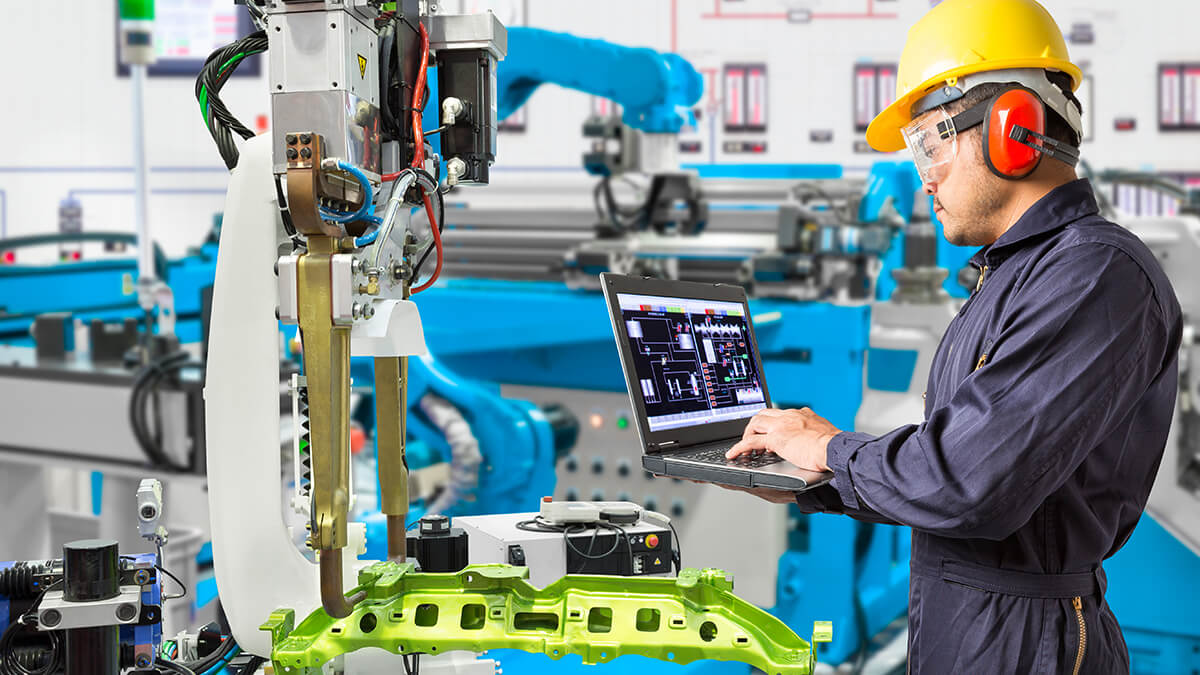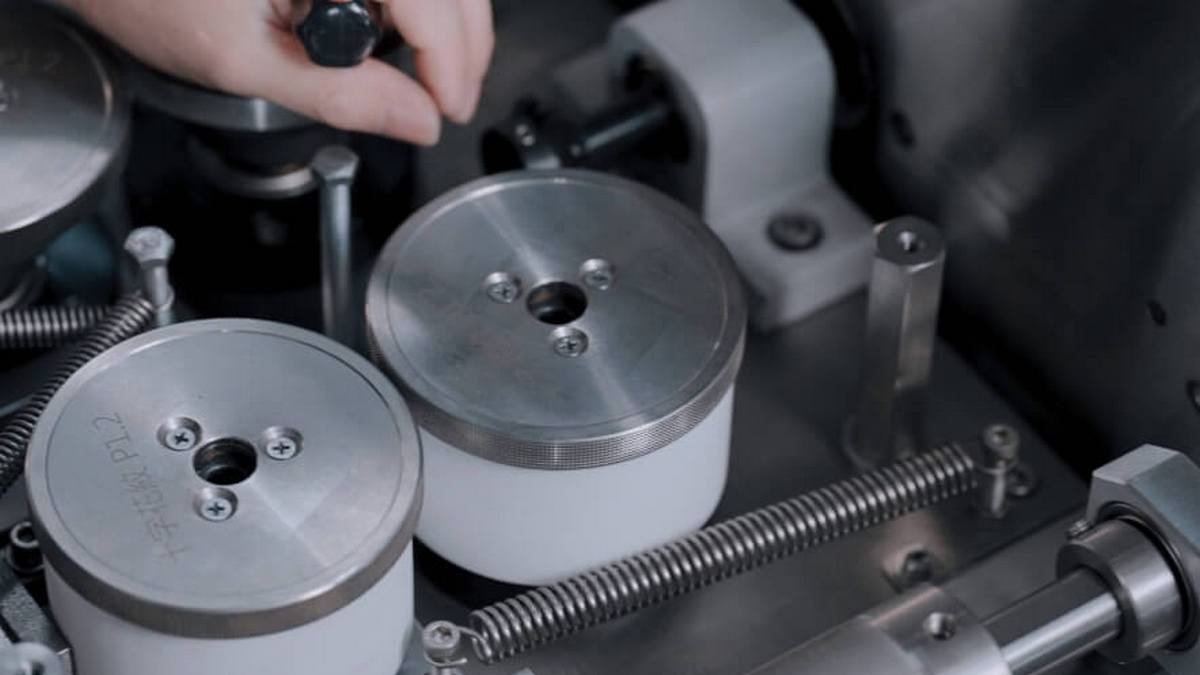Taiwan's IBM announced that it has joined forces with a large domestic solution integrator (SI) to identify the pain points that are difficult to integrate between IT and OT in the manufacturing industry, and uses the IBM Smart Manufacturing 5C maturity model as the blueprint. Both parties will provide pre-introduction evaluation services, depending on needs. However, SI will provide OT and IT integration services, or IBM will provide more data-driven AI value-added services.
Accelerate the Development of Intelligent Manufacturing
To assist Taiwan’s manufacturing industry in the digital transformation, accelerating the implementation and large-scale application of smart manufacturing, Taiwan’s IBM teamed up with industry partners ADLINK Technology, WPI Group, Delta, and WiAdvance to create a smart manufacturing ecosystem. Companies assist to break through the bottleneck of digital transformation and accelerate the realization of smart manufacturing.
"Precision, yield, and utilization rate are where the competitiveness of the manufacturing industry lies. It covers the four major elements of the production line, including personnel, machines, materials, and processes. Connecting OT and IT will be an indispensable key and a prerequisite for the implementation of AI in manufacturing. "Taiwan IBM has joined hands with partners with technical advantages and industrial experience to create a complete ecosystem, from OT, IT and AI to enterprise application systems and hybrid clouds, and work together to provide complete solutions and professional services, so that smart manufacturing can truly be implemented as application scenarios. Create achievable investment benefits and a scalable operating structure.
IBM takes the smart manufacturing "5C maturity model" as its blueprint for action. The role of strategic partners focuses on solving the IoT connection layer device networking and data extraction challenges, as well as edge application scenarios to help companies break through the transformation of OT data into IT data. Technological bottlenecks, and after data extraction, further help companies build AI data application scenarios and AI platforms, and gradually implement the next three stages of smart manufacturing competitiveness, including dynamic simulation, smart factory, and dynamic customization.
The 5C Maturity Model
The 5C maturity model is a reference standard used by IBM to measure the intelligence of manufacturers. The table divides the manufacturing industry into 5 stages, from the most basic first stage to the most mature fifth stage, namely Connect (equipment connection), Convert (data conversion), Cyber (predictive simulation), Cognitive (smart factory), And Configure (dynamic customization).
- The first stage Connect refers to the use of IoT technology to connect factory equipment to achieve machine-to-machine (M2M) collaboration, and to be able to extract data. More advanced application scenarios include data conversion, edge computing after connecting old devices to the Internet, and virtualizing the controller on the device side for dynamic collaboration.
- The second stage of Convert is to build an AI big data analysis platform and use edge computing to analyze the data extracted in the first stage, for example, for predictive maintenance on single-point devices; more advanced application scenarios are on edge devices, For training, deployment, and inference of AI models.
- The third stage Cyber refers to the use of Digital Twins to visualize production data and perform predictive simulations, such as production scheduling or material requirements. At this stage, IBM believes that the most basic application scenario is to use dashboards to visualize production dynamics. High-end applications use AI models to automatically adjust and optimize schedules based on orders and production line dynamics.
- In the next stage, Cognitive will use AI to transform the factory into a smart factory that can self-diagnose, repair, and schedule automatically. As for the last stage, configure uses B2B hybrid cloud and block chain to complete a small number of diversified, short-delivery customized manufacturing, and to implement a software-defined value chain platform, such as extending the successful model of smart factories to others Business unit, even the entire B2B scene.
Companies are faced with problems such as turnover and strikes. How to reduce the risk of "people" is no longer a technical problem. It should improve efficiency through various methods and move towards more professional management. "In Asia's manufacturing system, the biggest risk lies in people." Taiwan has a unique position in smart manufacturing that European and American countries do not have. It has also developed from automation to smart, and smart emphasizes autonomy. The key lies in how to save manpower and make decisions independently by the equipment. In the process of smart development, it is necessary to integrate many IT, CT, and customer experience. Taiwan does not have to follow German or American standards. It should even have the ambition to customize standards, such as AI module standards and AI platform standards. The government assists in the formulation and promotion.
The reason for the stagnant transformation of many manufacturing industries is the lack of integration of IT and OT in the previous stage, that is, the first stage of 5C has not been realized, which makes it difficult to extract data, not to mention the subsequent value-added analysis. The challenges faced by Taiwan’s manufacturing industry, such as the burden of a huge and old system, the inability of single-point AI results to form economies of scale, and the inability to quickly spread to different production lines or other business units, have caused difficulties in vertical integration and horizontal diffusion. In response to this, IBM is expected to improve by cooperating with SI vendors. ADLINK Technology focuses on OT digitization needs and provides automatic optical inspection AOI, robots, and overall equipment efficiency (OEE) solutions. And WiAdvance provides Data Fabric services that can integrate OT and IT resources, such as sensors, monitors and error notification control, and enterprise asset management (EAM), customer order systems, ERP systems, financial and human resources systems. Series and so on. WPI Group provides IoT solutions to strengthen the integration of IT and OT in the manufacturing industry by providing sensors, OEM/ODM equipment, and application software services. And Delta integrates services with its own AI, cloud computing, edge computing, and software and hardware. IBM specializes in the requirements of the third to fifth stages, such as digital clones, AI data analysis and predictive models, and even vertical integration and horizontal expansion applications of the industry.
As for whether smart manufacturing will move towards the trend of large-scale enterprise consolidation? Generally, companies with smaller organizations have little demand for smart manufacturing. At this stage, most companies that can develop smart manufacturing are large companies that not only have their own IT or automation departments, but also It must have the ability to integrate systems, and the scale of the industry is large enough, and there is sufficient funding. It is even possible that in the future, the good technology and ROI model will continue to affect medium-sized manufacturers and generate more benefits. Even if large companies have personnel, technology, and funds to build an internal ecosystem, it is still a waste of time. The smart manufacturing ecosystem created by IBM and strategic partners has been well integrated from OT to IT. The purpose is It is hoped that enterprises can make good use of the strengths of ecosystem partners and their cooperative relationships. "In the past few years, not only in Taiwan but in the entire Asia-Pacific region, people who are more able to make good use of the ecosystem have moved faster.
The potential manufacturing customers that IBM has contacted are all concerned about the trend of smart manufacturing, only discussing that the orientation and scenarios will vary depending on the type of production environment. Compared with the early semiconductor and panel industries, there is no automation problem. Most of the talks are AI applications, while the assembly industry focuses more on automation. AI applications such as machine vision and visual inspection are used to replace part of the manual judgment and reduce the problem of poor yield. Also, many metal processing companies in central Taiwan have entered the supply chain of high-tech, aerospace, automotive, and other industries. In the process of metal processing, how to transfer the knowledge of the past masters on mold precision transfer into AI wisdom Transformation is also their concern. Many current smart manufacturing projects are facing the dilemma of ineffective results and stagnant progress. The main reason is that small projects that do their things lack an overall goal or long-term vision, and it is difficult to expand the deployment to cross-plant or cross-field applications. IBM is based on a full-scenario perspective to find the most directly beneficial application scenarios. When companies are evaluated and proof-of-concept and other operational phases, they can use the power of ecosystem partners to not only allow smart manufacturing to be implemented, but also have rapid Expand the scalability of the application range, and further extend the benefits to the entire manufacturing industry.
Relying on innovative technical services, integration capabilities, and deep experience, IBM has collaborated with strategic partners ADLINK Technology, WPI Group, Delta, and WiAdvance to create a smart manufacturing ecosystem to accelerate the advancement of Industry 4.0, and specifically realize the benefits and large-scale applications of smart manufacturing.







.jpg)






